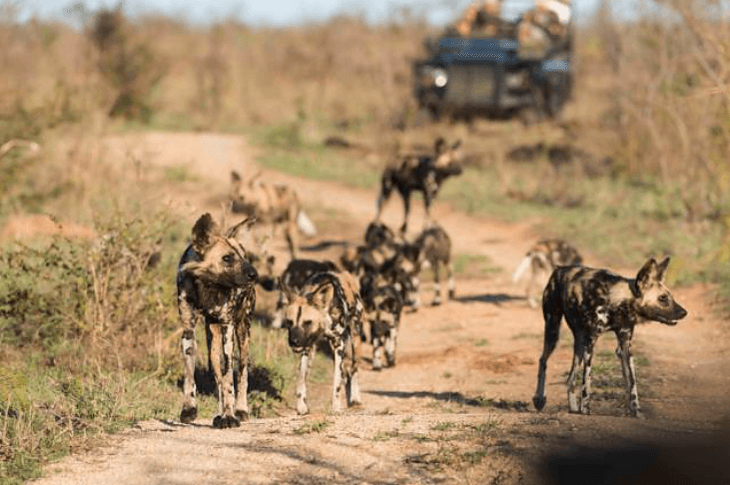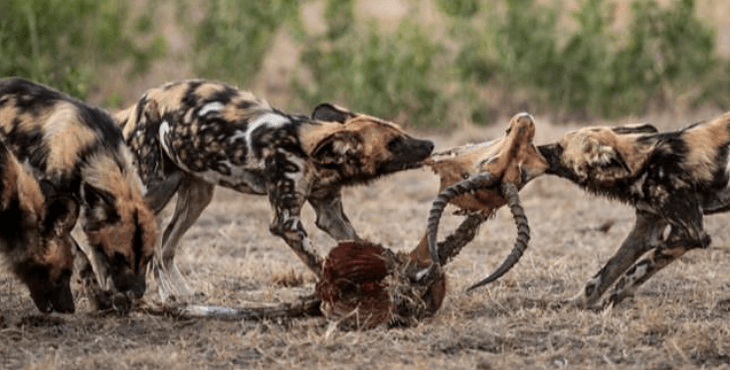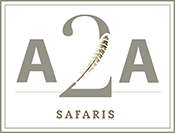Blog
September 06, 2016
Dog days at Singita Sabi Sand
Singita - Safari Lodges & Luxury Accommodation in Africa
Dog days at Singita Sabi Sand
Support for endangered species is an important element of Singita’s conservation purpose. Once widespread, the African wild dog is now one such endangered animal, so it’s especially thrilling to see them in our concessions and reserves. Field guide Ian Mey recently documented a pack of eight in the July Wildlife Report that had crossed into Singita Sabi Sand and were denning on the northern edge of the property:

The African painted wolf or wild dog has, and will always have, a special place in my heart. Not only are they one of southern Africa’s most efficient hunters, they are also one of its rarest and, in my opinion, most beautiful. Wild dog sightings in any part of Africa can be very few and far between, and there’s the added challenge of keeping up with them they float through the bush, effortlessly ranging from grasslands to thick woodlands. In the last month at Singita Sabi Sand, we have been extremely fortunate to get an insider’s view into one of the greatest privileges of my life; to be allowed to view and watch seven tiny pups grow.

The structure of a pack is very similar to that of the wolves found throughout Europe and North America, with an alpha pair who lead anything from two to 30 other individuals. The alpha pair is usually the only breeding pair in the pack and whatever young they produce are raised by the entire pack as their own. Watching these sublime predators interacting with the animals around them has provided some of my most spectacular sightings as their incredible speed and agility allows them to out-compete and out-manoeuvre all but the largest and most powerful of Africa’s predators, the lion. On more than one occasion I have witnessed packs chasing leopards up trees or fighting hyenas far larger than themselves into submission.
Many guests arrive not knowing the occasion behind a sighting of these magnificent carnivores, but most that do get to share our delight in such a viewing, leave with a memory as haunting as the call of a pack member lost and trying to find his way home.

Singita’s conservation teams go above and beyond “basic” conservation efforts to initiating effective and innovative anti-poaching methods, research, wildlife re-introduction, preserving invaluable San Rock Art sites and working on conservation issues beyond our boundaries. Each project supports Singita’s vision to preserve and protect wilderness areas for future generations through the three pillars of: wildlife conservation, eco-friendly tourism and community support. Visit the Conservation section of our site to find out more.





































Add comment
Singita - Safari Lodges & Luxury Accommodation in Africa
Dog days at Singita Sabi Sand
Support for endangered species is an important element of Singita’s conservation purpose. Once widespread, the African wild dog is now one such endangered animal, so it’s especially thrilling to see them in our concessions and reserves. Field guide Ian Mey recently documented a pack of eight in the July Wildlife Report that had crossed into Singita Sabi Sand and were denning on the northern edge of the property:
The African painted wolf or wild dog has, and will always have, a special place in my heart. Not only are they one of southern Africa’s most efficient hunters, they are also one of its rarest and, in my opinion, most beautiful. Wild dog sightings in any part of Africa can be very few and far between, and there’s the added challenge of keeping up with them they float through the bush, effortlessly ranging from grasslands to thick woodlands. In the last month at Singita Sabi Sand, we have been extremely fortunate to get an insider’s view into one of the greatest privileges of my life; to be allowed to view and watch seven tiny pups grow.
The structure of a pack is very similar to that of the wolves found throughout Europe and North America, with an alpha pair who lead anything from two to 30 other individuals. The alpha pair is usually the only breeding pair in the pack and whatever young they produce are raised by the entire pack as their own. Watching these sublime predators interacting with the animals around them has provided some of my most spectacular sightings as their incredible speed and agility allows them to out-compete and out-manoeuvre all but the largest and most powerful of Africa’s predators, the lion. On more than one occasion I have witnessed packs chasing leopards up trees or fighting hyenas far larger than themselves into submission.
Many guests arrive not knowing the occasion behind a sighting of these magnificent carnivores, but most that do get to share our delight in such a viewing, leave with a memory as haunting as the call of a pack member lost and trying to find his way home.
Singita’s conservation teams go above and beyond “basic” conservation efforts to initiating effective and innovative anti-poaching methods, research, wildlife re-introduction, preserving invaluable San Rock Art sites and working on conservation issues beyond our boundaries. Each project supports Singita’s vision to preserve and protect wilderness areas for future generations through the three pillars of: wildlife conservation, eco-friendly tourism and community support. Visit the Conservation section of our site to find out more.
Dog days at Singita Sabi Sand
Singita